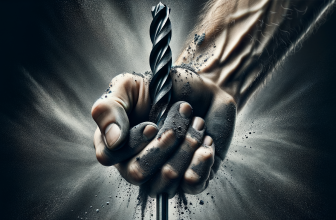
Are you in the market for a welding machine that promises both flexibility and reliability? Whether you’re a hobbyist or a professional welder, choosing the right MIG welder is crucial for achieving high-quality results. But what makes a MIG welder stand out among the sea of options available today? Let’s dive into a comprehensive review of the best MIG welders you can find, ensuring your next welding project is a resounding success.
Our Top Picks
Our #1 Top Pick: Miller Electric Millermatic 211
The Miller Electric Millermatic 211 remains a favorite in the welding community, thanks to its user-friendly interface and advanced auto-set feature. This powerful machine can weld materials up to 3/8 inch thick and accommodates both MIG and flux-cored processes. It’s powered by inverter technology, which makes it run more efficiently and cooler. Durability is a hallmark of this model, with a cast-aluminum drive system ensuring its longevity. When precision matters, the Miller Electric Millermatic 211 delivers consistent results, garnering glowing reviews from both beginners and veterans in the craft.
Pick #2: Hobart Handler 210 MVP MIG Welder
A perfect blend of performance and portability, the Hobart Handler 210 MVP is designed for those who need to move from job to job. Its multi-voltage plug allows it to operate on either 115V or 230V, offering versatility in various settings. The easy-to-set controls and an impressive duty cycle mean that it’s well-suited for both household and heavier industrial projects. The Hobart Handler also provides a stable arc on a wide range of thicknesses, making it an excellent option for those who demand flexibility without compromising on quality.
Pick #3: Lincoln Electric Power MIG 210 MP
Those looking for a multi-process welding solution should consider the Lincoln Electric Power MIG 210 MP. This model can handle MIG, TIG, and stick welding, making it a true all-rounder. The push-and-turn digital controls and color display screen make setup a breeze, even for the less experienced. It also features a heavy-duty wire drive system, which is fully adjustable and reduces the chance of wire tangling and crushing. If versatility across different welding types is a priority, the Lincoln Electric Power MIG 210 MP should be part of your toolkit.
Pick #4: Forney Easy Weld 261, 140 FC-i MIG Welder
The Forney Easy Weld 261 is beloved by DIY enthusiasts for its simplicity and compact design. With the capability to run up to .035″ wire and an amperage output ranging from 32 to 140 AMP, it can handle a variety of projects. Though it might seem small, the Easy Weld 261 does not hold back on power and functionality, making it ideal for projects around the house or a small shop. Additionally, the infinite voltage and wire feed speed control allows you to dial in the perfect weld, which is quite impressive for a welder in this price category.
Pick #5: ESAB Rebel EMP 215ic MIG Welder
If you’re seeking sophistication and high-tech features, the ESAB Rebel EMP 215ic should capture your attention. It’s another multi-process welder that excels in its smart MIG function, which adapts to your technique to provide a stable arc and reduce spatter. It’s also equipped with a TFT screen and a user-friendly interface. Although it comes with a higher price tag, the build quality and technology justify the expense for those who want a premium welding experience.
What to Know Before You Buy
Before diving into the purchase of a MIG welder, there are essential aspects you need to understand:
- The Thickness of Material: MIG welders vary in their capacity to handle different material thicknesses. It’s vital to consider the usual thickness of the materials you intend to weld.
- Power Supply and Output: Understanding the input voltage and amperage of a welder is key, as it should match your workspace’s power capabilities and the demands of your projects.
- Portability: If you need to move the welder around different locations or projects, weight and size will play a significant role in your decision.
- Multi-Process Capabilities: Some welders offer the ability to perform TIG, stick, and other welding types. Decide if you need this versatility or if a dedicated MIG welder will suffice.
- Duty Cycle: The duty cycle is the measure of how long a welder can run within a particular time frame without overheating. Ensure the duty cycle matches your workflow needs.
- User Interface: The simplicity and intuitiveness of the machine’s controls can significantly affect your user experience, especially if you are a beginner.
Factors to Consider Before Buying
Several considerations should guide your MIG welder purchase to ensure it suits your specific needs:
- Power Requirements: Assess whether the welder’s power requirements align with what’s available in your workspace.
- Control and Adjustment: Look for a welder that allows for precise adjustments in voltage and wire feed speed to achieve better control over your welds.
- Build Quality: A welder constructed with high-quality materials is more likely to endure the wear and tear of regular use.
- Brand Reputation and Support: Choose brands with good reputations for quality and customer support to ensure help is available should you need it.
- Price and Warranty: Make sure the price of the welder is justified by its features and capabilities, and that it comes with a warranty for peace of mind.
- Additional Features: Extra features like thermal overload protection, spool gun capability, and advanced wire feed systems can enhance the welding experience.
Why Trust ChooseRight?
At ChooseRight, we understand that trust is earned through thorough research and genuine advice. That’s why we’ve dedicated time to reviewing products, pouring over thousands of user reviews, and soliciting feedback from professionals in the welding industry. Our team carefully evaluates each welder’s performance, reliability, and value for money to guide you in making an informed decision. With ChooseRight, you can trust that our recommendations are based on actual data and professional insights.
Finishing Thoughts
Finding the best MIG welder can seem like a daunting task with so many options on the market. However, by considering the factors outlined and exploring our top picks, you are better equipped to select a welder that will serve you well. Whether it’s for home DIY projects, automotive repairs, or professional fabrication, the right MIG welder will enhance the quality of your work and the efficiency of your workflow. Remember, the best MIG welder is not necessarily the most expensive or the most feature-packed; it’s the one that fits your specific needs and allows you to weld with confidence.
Frequently Asked Questions
What is a MIG welder and how does it work?
A MIG (Metal Inert Gas) welder is a type of welding machine that utilizes a continuously fed wire electrode and a shielding gas to create strong welds on various metals. It works by forming an electric arc between the wire electrode and the metal workpiece, melting both to form a joint.
What types of metal can I weld with a MIG welder?
MIG welders are versatile and can be used to weld a wide range of metals including carbon steel, stainless steel, aluminum, and other alloy metals. However, the specific capabilities depend on the welder’s power and settings.
Can I use a MIG welder for both thick and thin materials?
Yes, a MIG welder can be used on both thick and thin materials, but it’s essential to adjust the power settings and wire size accordingly to prevent burning through thinner materials or insufficient penetration in thicker ones.
What should I consider when choosing the best MIG welder for my needs?
Consider the types of metal you’ll be welding, the thickness of those materials, your welding environment (indoors/outdoors), portability needs, power availability, and your budget. Special features such as adjustable settings, multi-process capabilities, and ease of use may also influence your decision.
Do I need any additional equipment to start MIG welding?
Aside from the MIG welder, you will need safety gear (welding helmet, gloves, protective clothing), MIG wire, shielding gas, a regulator, and possibly a cart for larger units. Optional equipment can include clamps, angle grinders, and cleaning tools for preparing metal surfaces.
Is MIG welding suitable for beginners?
MIG welding is often recommended for beginners due to its simplicity and ease of learning. The process is relatively clean, and the equipment is straightforward to set up and use.
How do I maintain my MIG welder?
Regular maintenance includes cleaning the machine, checking the wire feeder, replacing contact tips and liners as needed, ensuring connections are tight, and inspecting gas hoses and regulators. Always consult your welder’s manual for specific maintenance procedures.
What is the difference between a MIG welder and a TIG welder?
MIG and TIG (Tungsten Inert Gas) welders both use inert gases to shield the weld, but MIG welding uses a consumable wire electrode while TIG welding uses a non-consumable tungsten electrode. TIG welding is known for precision and is typically used for thinner materials and intricate welds, whereas MIG welding is faster and more suitable for thicker materials and longer, continuous welds.
Can I MIG weld outdoors?
MIG welding can be done outdoors, but it’s not ideal because the wind can disperse the shielding gas, leading to potential weld defects. If welding outdoors is necessary, using a wind shield and optimizing gas flow can help.
How much does a good MIG welder cost?
The cost of a MIG welder can range from a few hundred to several thousand dollars, depending on the features, brand, and capabilities. Entry-level models are suitable for hobbyists and occasional users, while professional-grade welders are more expensive but offer higher performance and durability.







